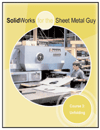With an increased interest in using natural refrigerants, there are several important considerations to make when deciding whether to use CO2 (R-744) as a refrigerant for food retail, food manufacturing, food processing plants, and the cold chain. These include environmental benefits, refrigeration system technology, regulations and compliance, safety requirements, maintenance and operating conditions, and refrigerant leak detection technology.
Environmental benefits
Natural refrigerants like CO2, ammonia, and hydrocarbons are often used because of their inherent environmental benefits. With zero ozone depletion potential (ODP) and very low to zero GWP, natural refrigerants are seen as a great alternative to synthetic refrigerants, as they are less polluting to the atmosphere. For the food retailer or manufacturer, using a natural refrigerant like CO2 carries with it a positive environmental message that often coincides with the natural foods or farm-to-table branding messages that customers find appealing.
Refrigeration system technology
CO2 refrigeration systems are now an established technology, and the hurdles experienced with their early adoption have now been overcome over the past 15 years. OEMs and gas suppliers have increased the support base for these systems, and the engineering base for maintenance has increased to enable quick responses to call-outs. There have also been improvements made to CO2 systems when it comes to their energy efficiency, especially regarding the transcritical stage with injector technology and parallel compressors.
Regulations and compliance
It is easy to see why a food retailer or manufacturer would now seriously consider using CO2 as a refrigerant. In many locations around the world, there are strict regulations and enforcement mechanisms in place to reduce the use of high GWP refrigerant gases, like HFCs. Using a natural refrigerant like CO2 means the commercial user or facility is not required to report information to regulatory bodies. This could potentially mean not having to pay for costly fines for refrigerant leaks and non-compliance, while also eliminating any corresponding negative press coverage for the user.
Health and safety requirements
While CO2 is an increasingly attractive option for use as a refrigerant, it can pose a huge potential health hazard to humans when seen in high concentrations. CO2 concentrations play an important function as part of the Occupational Safety and Health Administration (OSHA) exposure limits if there were to be a leak event. Typical figures stipulated for CO2 exposure by OSHA are:
- 5,000 ppm – Occupational Exposure Limit (OEL)
- 40,000 ppm – Immediately Dangerous to Life or Health (IDLH)
Since CO2 is part of the air we breathe (around 0.04 percent, or 400 parts per million), it can be challenging to measure leaking CO2 refrigerant in low concentrations, due to its natural background level. When measuring for background CO2 in ppm, for example, in a retail supermarket, the levels vary depending on how many customers are in the area of the sample. It also depends if dry ice is being used in the area, as that too, could add to the overall concentration. Similarly, if a bakery section was sited in a food retail where yeast proofing took place or if the food manufacturing or processing function involved fermentation or carbonating, CO2 levels may well fluctuate considerably. Typically the CO2 levels in this type of application would range from 600 to 1,400 ppm.
Since CO2 systems operate at much higher pressures than systems used with other types of refrigerants, such as HFC direct expansion (DX) systems, when a CO2 refrigerant leak occurs, it tends to fill the space more rapidly and become more catastrophic quicker. This means the amount of refrigerant lost is much higher and can cause more disruption to trade, higher inventory or stock losses and be dangerous to life and health. Leakage rate for CO2 when compared with their HFC refrigerants is typically much higher.
Maintenance and operating conditions
Although CO2 refrigeration systems are designed to operate at pressures much higher than HFC DX systems, it is always good to consider a maintenance program for the continued use and wear of the equipment. These high pressures and relative performance through the heat rejection and expansion process pose inherent challenges to CO2 efficiency. As an additional consideration, CO2 systems are more expensive than their HFC/HCFC DX equivalents, due to the use of electronic controls at all the fixtures. They may carry more upfront costs than a traditional type of system, therefore, financial justification from a retailer’s perspective is an important consideration for the initial capital expenditure.
Refrigerant leak detection technology
The technology and equipment used in CO2 refrigerant detection is either an aspirated system, which pulls air from sample points in various zones located at distances of up to 1,200 feet or four football fields, or a local/point sensing head, which uses diffusion to detect the gas. Whichever technology is adopted, non-dispersive infrared (NDIR) sensing is the choice for sensing CO2. The choice between aspirated and point sensing is an end-user preference, as both are suitable technologies to use, and aspirated will always be the better solution over the long term/life cycle of the system.
CO2 users must have leak detection in place to protect operations and personnel, especially in confined spaces such as walk-in coolers/freezers and confined rack rooms. CO2 sensing technology alarming tends to include additional alarms/sirens and appropriate signage for confined areas to alert people inside the walk-in/cooler freezer and outside the CO2 rack rooms
Choosing CO2
The environmental benefits of using CO2 as a refrigerant far outweigh its risks. Given its zero ODP and very low GWP, CO2 can be a great asset for food retail, food production and processing, and cold chain applications. With an effective refrigerant management strategy coupled with leak detection systems, CO2 can provide any forward-thinking refrigeration manager or food retailer with reduced operating costs, improved system uptime, protection for their employees, and responsibility for their environmental footprint.
Jason Ayers is an application support engineer at Parasense, A Bacharach company.
Want more HVAC industry news and information? Join The NEWS on Facebook, Twitter, and LinkedIn today!










